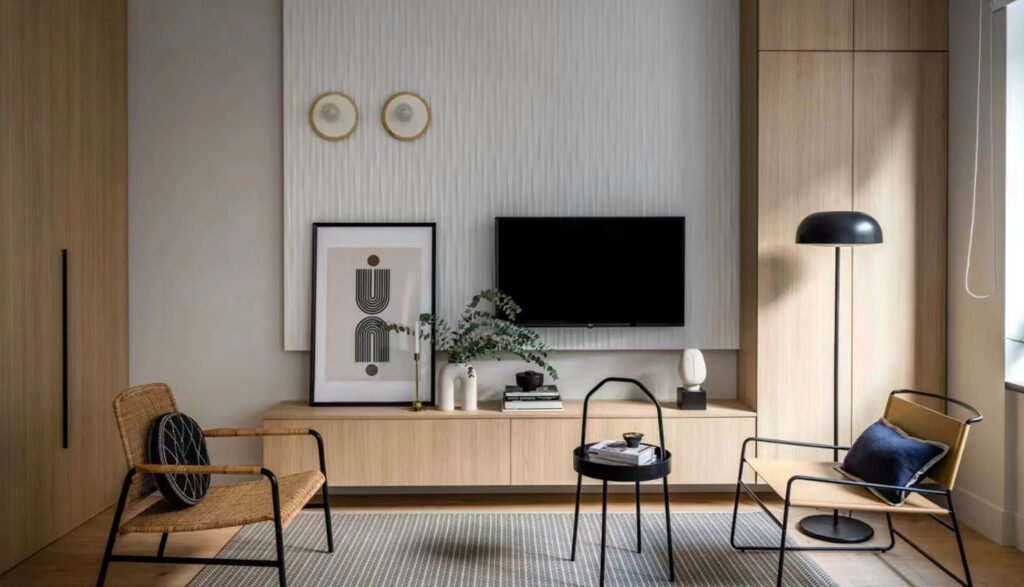Particle board is a popular material for furniture, cabinets, and flooring due to its affordability and versatility. However, it is prone to damage from moisture, impact, and wear over time. Swelling, chipping, and surface peeling are common issues. Instead of replacing your furniture or fixtures, you can repair damaged or swollen particle board with the right techniques. This guide will walk you through step-by-step solutions to restore your particle board items.
1. Assess the Type of Damage
Before beginning repairs, identify the type of damage:
- Swelling or warping due to moisture exposure
- Chips and cracks in the edges or corners
- Peeling veneer or laminate
- Screw holes that have become loose or stripped
Each type of damage requires a different approach for proper restoration.
2. How to Fix Swollen Particle Board
Moisture causes particle board to swell, warp, or weaken. Here’s how to fix it:
Step 1: Dry the Particle Board Completely
- Place the furniture in a dry, well-ventilated area
- Use a fan, dehumidifier, or hairdryer on a low setting to speed up drying
- Do not expose it to direct sunlight as rapid drying can cause further warping
Step 2: Sand Down the Swollen Area
- Once dry, use medium-grit sandpaper (120-150 grit) to sand down the swollen area
- If needed, switch to fine-grit sandpaper (220 grit) for a smooth finish
- Remove dust with a damp cloth or tack cloth
Step 3: Apply Wood Filler
- Use wood filler or putty to fill any uneven areas
- Spread evenly with a putty knife and allow it to dry completely
- Sand the area again for a smooth finish before painting or sealing

3. How to Repair Chipped or Broken Particle Board
Chipped or cracked edges are common in tabletops, cabinets, and shelving. To fix them:
Step 1: Remove Loose Particles
- Use a utility knife to cut away any loose or crumbling pieces
- Clean the area with a soft cloth to remove dust and debris
Step 2: Fill the Gaps with Wood Filler or Epoxy
- Apply wood filler, epoxy, or a mixture of sawdust and wood glue to the damaged area
- Smooth the surface with a putty knife
- Let it dry completely before sanding
Step 3: Sand and Refinish
- Sand the repaired area with fine-grit sandpaper (220-grit) until smooth
- Paint, stain, or apply a protective sealant to match the original finish
4. How to Fix Peeling Laminate or Veneer
Particle board furniture often has a thin laminate or veneer layer that can peel over time.
Step 1: Reattach the Loose Laminate
- Lift the peeling section slightly and apply wood glue or contact cement underneath
- Press the laminate down firmly and place a heavy object on top to hold it in place while drying
Step 2: Trim and Smooth the Edges
- If the laminate has broken edges, trim them with a sharp utility knife
- Sand the edges lightly to blend with the rest of the surface
Step 3: Refinish the Surface
- If necessary, apply paint, varnish, or a new laminate sheet for a fresh look

5. How to Repair Stripped Screw Holes in Particle Board
Over time, screws in hinges, drawer handles, and furniture joints can become loose due to worn-out holes.
Method 1: Use Toothpicks and Wood Glue
- Fill the hole with wood glue and insert several wooden toothpicks or matchsticks
- Allow it to dry, then trim off any excess
- Reinsert the screw, and it should grip firmly
Method 2: Use a Larger Screw or Plastic Anchor
- Replace the loose screw with a slightly larger one
- If needed, insert a plastic anchor to improve grip
Method 3: Fill with Wood Filler and Drill a New Hole
- Apply wood filler or epoxy into the damaged hole
- Let it dry completely, then drill a new pilot hole before reinserting the screw
6. Sealing and Protecting the Repaired Area
To prevent future damage, finish the repaired area with:
- Waterproof sealant for moisture resistance
- Paint or stain to blend with the original color
- Edge banding or veneer tape for extra protection
Conclusion
With the right techniques, you can repair and restore damaged or swollen particle board furniture instead of replacing it. Proper sealing, maintenance, and timely repairs will help extend its lifespan.
Get High-Quality Particle Board from Tacon Wood Industry
For durable and reliable particle board, Tacon Wood Industry offers high-quality materials suitable for furniture, construction, and interior applications. Contact us at taconsales86@gmail.com for inquiries and product details!




